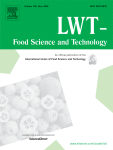View Item
- xmlui.general.dspace_homeCentros Regionales y EEAsCentro Regional Mendoza - San JuanEEA MendozaArtículos científicosxmlui.ArtifactBrowser.ItemViewer.trail
- DSpace Home
- Centros Regionales y EEAs
- Centro Regional Mendoza - San Juan
- EEA Mendoza
- Artículos científicos
- View Item
Growth response of Saccharomyces cerevisiae strains to stressors associated to the vine cycle
Abstract
Saccharomyces cerevisiae isolates from grapes, soil, vine bark and buds collected at seven phenological stages of an annual growth cycle, were molecular typed by Microsatellite Multiplex PCR. Subsequently 30 S. cerevisiae genotypes were selected and the effect of vineyard environmental stressors, in both sublethal upper and lower levels, on their growth parameters was evaluated. The effect of low and high temperature (7–40 ◦C), pH (2.5–8.0), glucose
[ver mas...]
Saccharomyces cerevisiae isolates from grapes, soil, vine bark and buds collected at seven phenological stages of an annual growth cycle, were molecular typed by Microsatellite Multiplex PCR. Subsequently 30 S. cerevisiae genotypes were selected and the effect of vineyard environmental stressors, in both sublethal upper and lower levels, on their growth parameters was evaluated. The effect of low and high temperature (7–40 ◦C), pH (2.5–8.0), glucose concentration (3.0–300.0 g/L), nitrogen concentration (0.008–8.0 g/L), and copper presence (24 mg/L) were modelled individually using the reparametrized Gompertz equation. Multivariate ANOVA and
Generalized Procrustes Analysis were used to determine the environmental stressor’s influence over the lag phase (λ) and the maximum specific growth rate (μmax). Both parameters were significantly affected by the S. cerevisiae genotype, the treatments, and the interaction between them. Despite a generalized reduction in μmax and a variable answer in λ, the 30 S. cerevisiae genotypes were able to overcome all the treatments. Extreme glucose limitation, copper presence and low temperature had the highest impact over the growth parameters. Interestingly, ten genotypes mostly distributed in the vineyard were the least affected, suggesting a greater acclimatization fitness and the possibility to persist in the changing conditions of the vine annual cycle.
[Cerrar]

Author
Gonzalez, Magali Lucia Rosa;
Valero, Eva;
Chimeno, Selva Valeria;
Garrido Fernandez, Antonio;
Rodriguez Gomez, Francisco;
Rojo, Cecilia;
Paolinelli, Marcos;
Arroyo Lopez, Francisco Noe;
Combina, Mariana;
Mercado, Laura Analia;
Fuente
LWT, Food Science and Technology 158 : 113157 (2022)
Date
2022-03-07
Editorial
Elsevier
ISSN
0023-6438
Documentos Relacionados
Formato
pdf
Tipo de documento
artículo
Proyectos
(ver más)
INTA/2019-PE-E6-I114-001/2019-PE-E6-I114-001/AR./Caracterización de la diversidad genética de plantas, animales y microorganismos mediante herramientas de genómica aplicada.
Palabras Claves
Derechos de acceso
Abierto
 Excepto donde se diga explicitamente, este item se publica bajo la siguiente descripción: Creative Commons Attribution-NonCommercial-ShareAlike 2.5 Unported (CC BY-NC-SA 2.5)
Excepto donde se diga explicitamente, este item se publica bajo la siguiente descripción: Creative Commons Attribution-NonCommercial-ShareAlike 2.5 Unported (CC BY-NC-SA 2.5)


